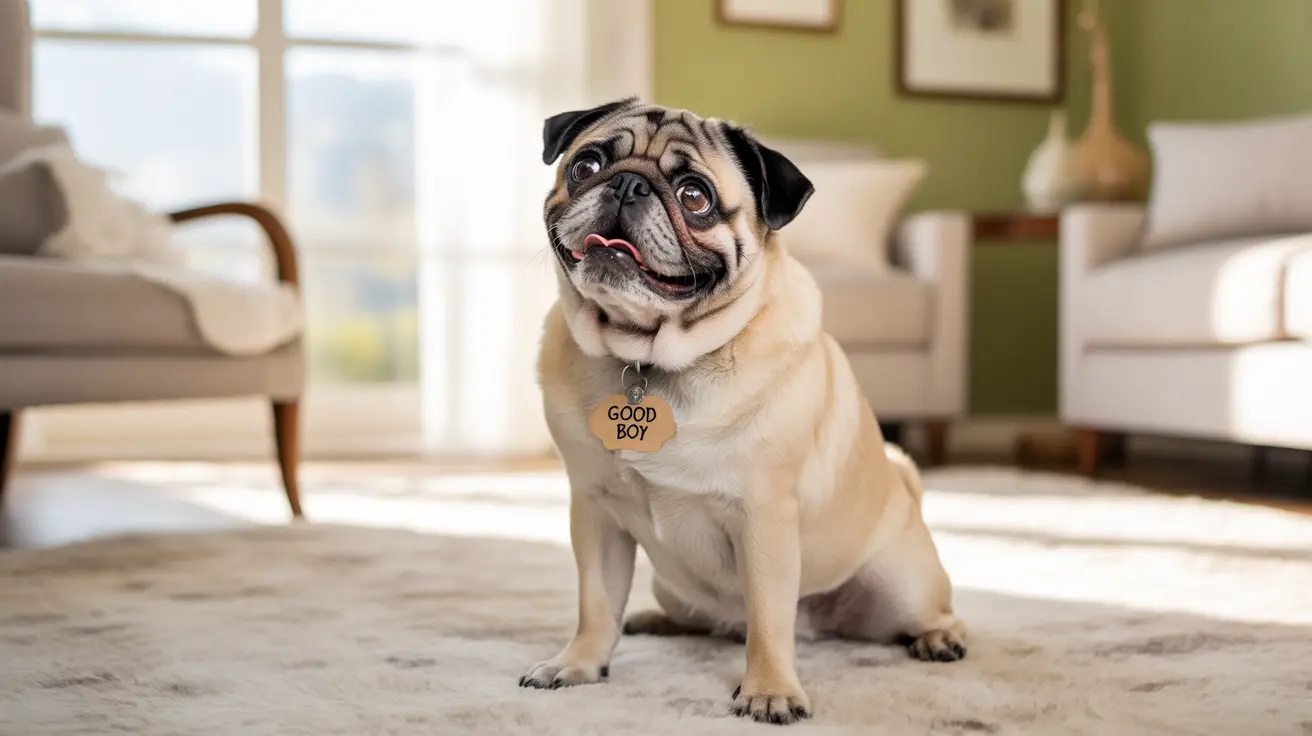Training a pug requires a unique approach that takes into account their distinctive personality traits and physical characteristics. These charming, stubborn little dogs have won hearts worldwide with their playful nature and expressive faces, but their training needs specific attention to detail and understanding.
In this comprehensive guide, we'll explore proven methods for training your pug effectively, addressing everything from basic obedience to handling common behavioral challenges. Whether you're a new pug parent or looking to refine your existing training techniques, you'll find valuable insights tailored to this special breed.
Understanding Your Pug's Personality
Pugs are known for their loving, social nature and intelligence, but they can also be remarkably stubborn. Their eagerness to please is often matched by their independent streak, making consistent training essential. These dogs respond best to positive reinforcement and food motivation, though this latter trait needs careful management to prevent obesity.
Their sensitivity to both praise and correction means that harsh training methods can be counterproductive. Instead, focus on building trust and maintaining patience throughout the training process.
Essential Training Foundations
Starting Early
Begin training your pug puppy as soon as they arrive home. Early socialization and basic command training lay the groundwork for a well-behaved adult dog. Expose them to various situations, people, and environments in a controlled, positive manner.
Setting Up for Success
Create a consistent routine for feeding, potty breaks, and training sessions. Keep training periods short (5-10 minutes) but frequent, as pugs can lose interest in longer sessions. Use high-value treats sparingly, and ensure your training area is free from distractions initially.
Key Training Areas
Basic Obedience
Focus on fundamental commands like "sit," "stay," "come," and "leave it." Use clear, consistent verbal cues paired with hand signals. Reward successful responses immediately with treats and enthusiastic praise.
House Training
Establish a regular schedule for potty breaks, particularly after meals and naps. Be patient, as pugs may take longer to house train than some other breeds. Celebrate successes and avoid punishment for accidents, which can create anxiety and setbacks.
Leash Training
Use a properly fitted harness rather than a collar to protect your pug's respiratory system. Begin leash training in a quiet area, teaching them to walk beside you without pulling. Reward frequent eye contact and proper positioning.
Managing Common Challenges
Preventing Separation Anxiety
Pugs are highly social and can develop separation anxiety if not properly trained. Gradually accustom your pug to being alone, starting with short periods and slowly increasing duration. Provide engaging toys and create a comfortable, safe space for them when alone.
Controlling Begging Behavior
Despite their food motivation, pugs can learn to control begging behavior. Establish clear boundaries during meal times, never feed from the table, and reward calm behavior when food is present.
Advanced Training Tips
Once your pug has mastered basic commands, introduce more complex training exercises to keep them mentally stimulated. Trick training can be especially rewarding for pugs, who enjoy showing off for their families. Consider activities like agility training (modified for their physical limitations) or nose work games.
Frequently Asked Questions
How do I start house training my pug puppy effectively?
Establish a strict schedule for feeding and potty breaks, take them out every 2-3 hours, and immediately after meals or naps. Use positive reinforcement when they eliminate outside, and maintain consistent supervision to prevent accidents.
What are the best positive reinforcement techniques for training a stubborn pug?
Use high-value treats, enthusiastic praise, and keep training sessions short and engaging. Vary rewards to maintain interest, and always end sessions on a positive note. Consistency is key when dealing with stubborn behavior.
How can I crate train my pug to create a safe, comfortable space?
Introduce the crate gradually using treats and positive associations. Make it comfortable with bedding and toys, never use it as punishment, and start with short periods, gradually increasing duration as your pug becomes comfortable.
What is the best way to teach my pug leash walking without pulling?
Use a properly fitted harness, start in a distraction-free environment, and reward your pug for walking beside you. Stop walking when they pull, and only continue when the leash is loose. Consistency and patience are essential.
How do I prevent my pug from begging during family meals?
Teach a "place" or "go to bed" command, reward calm behavior away from the table, never feed from your plate, and ensure all family members follow these rules consistently. Provide a comfortable spot where your pug can relax during meals.
Conclusion
Training a pug requires patience, consistency, and understanding of their unique characteristics. Focus on positive reinforcement, keep sessions short and engaging, and always consider their physical limitations. With dedication and the right approach, your pug can become a well-mannered, happy companion who brings joy to your household while maintaining their characteristic charm and personality.






